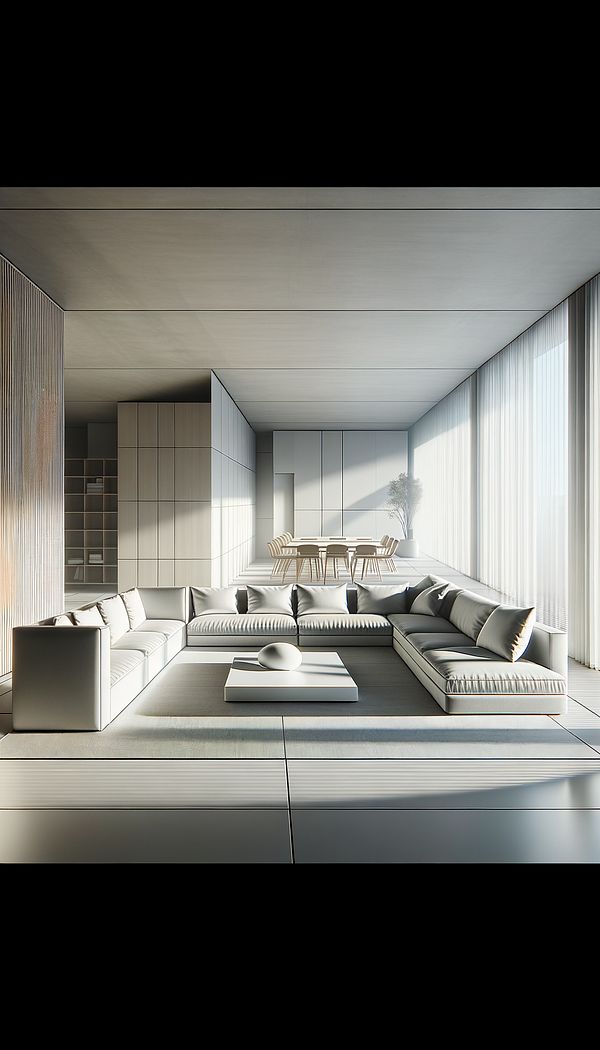What is Functionalism?
Functionalism is a design approach that emphasizes the purpose of design over aesthetics.
Description
Functionalism in interior design is a principle that prioritizes the practicality and functionality of a space, furniture, and accessories over decorative aspects. This approach is rooted in the belief that the form of a design element should be primarily influenced by its purpose. Originating in the early 20th century, functionalism grew out of the modernist movement and has been a guiding philosophy in various design fields, including architecture, product design, and notably, interior design.
Functionalism advocates for simplicity, efficiency, and the elimination of superfluous elements that do not serve a practical purpose. It seeks to create environments that are directly tailored to the human experience, emphasizing comfort, ease of use, and the optimization of space. In essence, functionalism is about creating spaces that are as aesthetically minimal as they are optimally functional.
This design philosophy has greatly influenced contemporary interior design trends, such as minimalism and industrial design, which also favor simplicity and utility. Its impact is seen in the streamlined look of furniture, the strategic use of materials, and the thoughtful consideration of human interaction with space.
Usage
Functionalism can be observed in spaces that are designed with efficiency in mind, such as ergonomic offices, kitchens with intuitive layouts, and living rooms that prioritize comfort and usability. Furniture pieces that embody functionalism often feature clean lines, durable materials, and a distinct lack of decorative elements. This principle is also applied in the selection of materials and finishes, favoring those that are practical, easy to maintain, and suitable for their intended use.
FAQs
-
How does functionalism differ from other design styles?
Functionalism differs from other design styles by prioritizing functionality over aesthetics. While other styles may focus on decorative elements and thematic aesthetics, functionalism is rooted in the practicality and usability of the space and its elements.
-
Can functionalism coexist with other interior design styles?
Yes, functionalism can be integrated with other interior design styles. It’s not uncommon for designers to apply functionalist principles within diverse design contexts, combining practical elements with various aesthetic styles to create spaces that are both functional and visually appealing.
-
Is functionalism only suitable for modern spaces?
No, while functionalism has roots in modern design movements, its principles can be applied to any space, regardless of style. It’s about optimizing the space for its intended use, which can be relevant in traditional, contemporary, and eclectic interiors alike.
Practical Application
To apply functionalism in interior design, start by considering the primary function of each space and selecting furniture and decor that serve those functions efficiently. Use materials and finishes that are durable and easy to maintain, and strive for a layout that facilitates easy movement and interaction. This approach can help create spaces that are not only beautiful but inherently practical and comfortable.
-
Design Styles478 articles
-
Furniture Types599 articles
-
Space Planning & Layout134 articles
-
Materials & Textiles360 articles
-
File CabinetA file cabinet is a storage unit with drawers or compartments designed for organizing and storing files and documents.
-
Dhurrie RugA Dhurrie rug is a traditional flat-weave rug from India, known for its durability, lightness, and versatile patterns.
-
Drawn To ScaleDrawn to scale refers to the replication of an object or space on paper or software, proportionately adjusting its dimensions to fit a specific size reference.
-
Bullion FringeBullion fringe is a type of decorative trim used in interior design to add texture and elegance.
-
Book MatchBook Match refers to a mirror-like reflection technique used in the placing of two matching surfaces.
